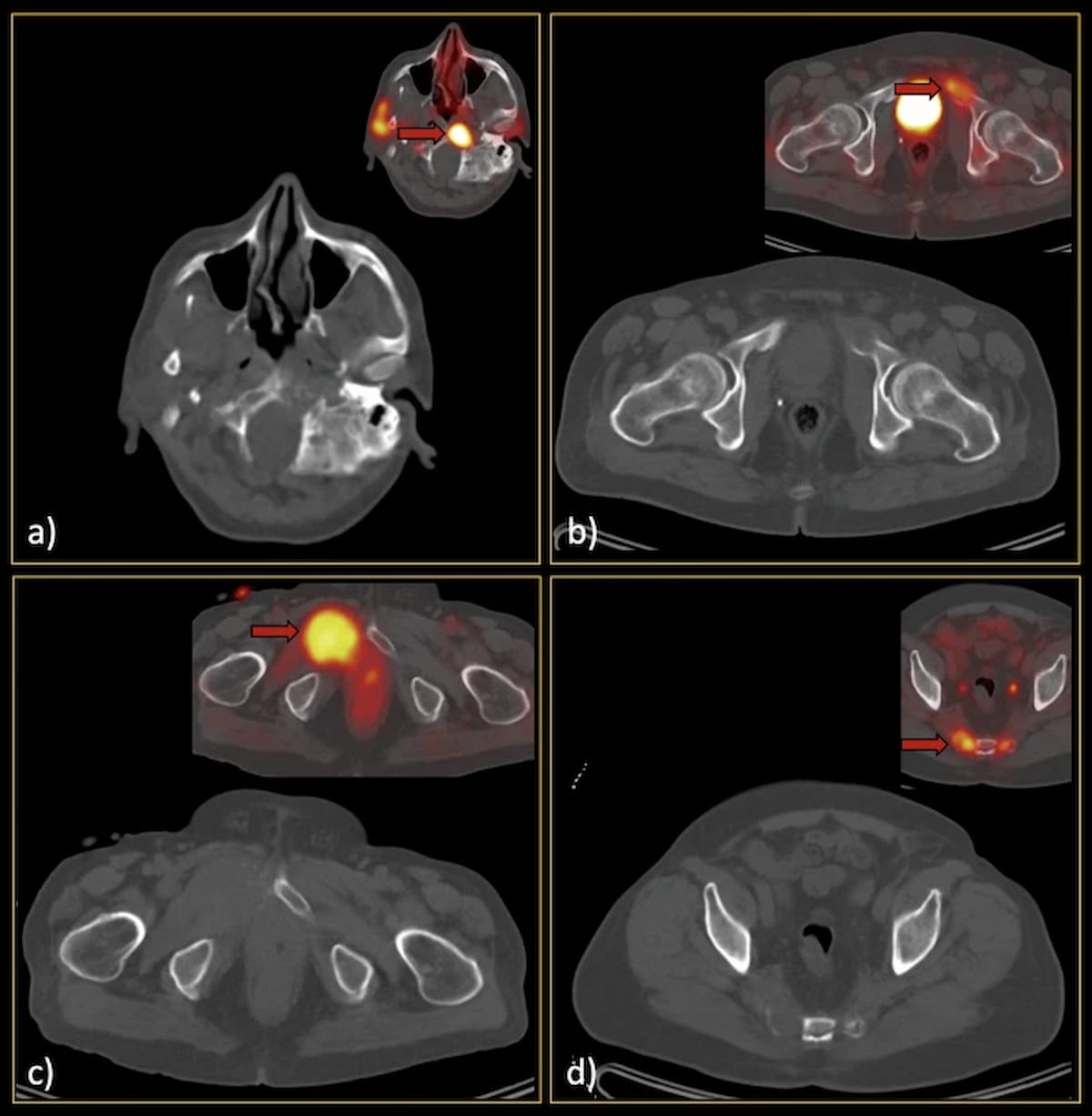Can Low-Dose CT Have an Impact in Diagnosing Bone Metastasis in Patients with Prostate Cancer?
In a study of 601 patients with prostate cancer, researchers found that only one patient with extensive metastasis was falsely diagnosed as non-metastatic on whole-body, low-dose computed tomography (CT) by reviewing radiologists.
For the detection of osteo-metastasis in patients with prostate cancer, whole-body computed tomography (CT) demonstrated sensitivity ranging between 81 to 89.4 percent and specificity ranging between 96.6 to 98.5 percent, according to new research.
For the study, recently published in Insights into Imaging, researchers examined the use of whole-body, low-dose CT for the diagnosis of osteo-metastasis in 601 patients (mean age of 68.7) with prostate cancer. According to the study, 35.1 percent of the cohort received imaging for initial staging and 64.9 percent had imaging to assess the extent of the disease after biochemical recurrence (BCR) of prostate cancer.
For the initial staging group, low-dose CT had a per-patient sensitivity rate ranging between 76.8 and 88.4 percent with specificity ranging between 98.6 and 99.3 percent. For patients with BCR, the researchers found a sensitivity range between 83.3 to 90 percent and a specificity rate between 95.6 to 98.6 percent for the reviewing radiologists. Overall, low-dose CT demonstrated an 81 to 89.4 percent sensitivity rate and a 96.6 to 98.5 percent specificity rate for osteo-metastasis in the study cohort, according to the authors.
In an analysis of metastatic lesions with underlying CT findings, the researchers found that lesion features such as size > 1 cm, cortical destruction, the presence of a soft tissue component and ill-defined borders were statistically associated with metastasis. (Images courtesy of Insights into Imaging.)

While previous research has shown higher sensitivity and specificity for 68Ga-PSMA PET/CT in detecting osteo-metastasis (see ref 9 in study), the study authors said whole-body, low-dose CT may provide a viable alternative that is less expensive and is more widely available than 68Ga-PSMA PET/CT.
“The high accuracy at the per-patient level indicated that CT could correctly diagnose the presence or absence of metastasis in most patients. However, in clinical management, both in staging and BCR conditions, it is important to know the burden of disease. In this issue, CT still had reliable performance, meaning most patients would receive the proper therapy,” wrote lead study author Mohammadreza Chavoshi, M.D., who is affiliated with the Department of Radiology at Shariati Hospital and the Tehran University of Medical Sciences in Iran, and colleagues.
The study authors noted that the per-lesion analysis for benign lesions with whole-body low-dose CT had significantly lower sensitivity (48.5 to 63.3 percent) as well as lower specificity (82.1 to 92.1 percent). The researchers also found that CT did not detect 30.8 percent of metastatic lesions in patients without extensive disease.
However, Chavoshi and colleagues noted that current CHAARTED and LATITUDE criteria for prostate cancer do not emphasize precision in determining the number and location of osteo-metastatic lesions as the treatment would be the same for patients deemed to be at high risk. They also noted that whole-body, low-dose CT had only one false diagnosis of a patient with extensive metastasis.
“In the initial staging of PCa patients based on the above-mentioned criteria, whole-body low-dose CT showed promising findings in terms of specificity and (positive predictive value), regardless of readers’ expertise. This means that the treatment approach would have been confidently adopted in the patients diagnosed with the high-burden disease,” noted Chavoshi and colleagues.
Expanded FDA Approval Allows Use of Pluvicto Prior to Chemotherapy in Patients with mCRPC
March 28th 2025Recent research demonstrated a 59 percent reduced risk of progression or death with the radioligand therapy Pluvicto in comparison to a change of androgen receptor pathway inhibitor (ARPI) for patients with metastatic castration-resistant prostate cancer (mCRPC).
Study: Monitoring of Prostate MRI Exams Could Lead to 75 Percent Reduction of Gadolinium Contrast
March 17th 2025While DCE MRI was deemed helpful in over 67 percent of cases in which it was used, researchers found that monitored prostate MRI exams, which facilitated a 75 percent reduction of DCE MRI sequences, had comparable sensitivity for prostate cancer as non-monitored exams.
Meta-Analysis Shows No Difference Between bpMRI and mpMRI in Ruling Out csPCa
March 6th 2025In an 18-study meta-analysis involving over 4,600 patients, researchers found that bpMRI and mpMRI had equivalent pooled negative predictive value (NPV) of 92 percent for clinically significant prostate cancer (csPCa).